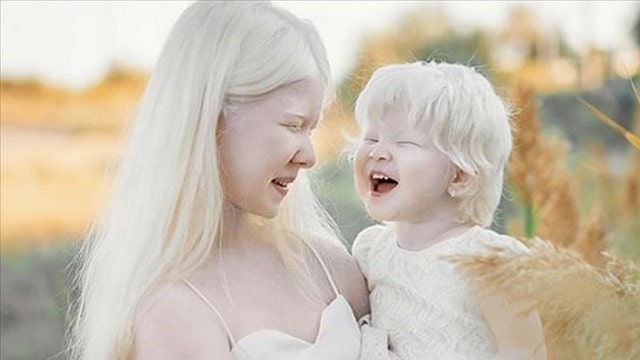Albino, or better known as albinism is a condition that occurs when someone is born with less or no melanin. Melanin itself is a pigment produced by the body to determine a person’s skin color. Not only does the skin look pale, someone with this condition also has different hair and iris colors compared to humans in general.
Melanin not only determines the color of skin, hair, and iris, but also affects the development of the optic nerve in the function of vision. So, someone with albinism can also experience congenital vision disorders from birth. So, what are the risk factors for albinism that need to be known? Do genetic factors play an important role in this? Here’s the discussion! Related Article: Albinism Can Cause Vision Problems
Genetics Is The Only Risk Factor For Albinism
Albinism is a condition that someone has experienced since birth. One of the factors that plays an important role in determining this condition is the genetic factor from both parents. If you have the risk factors for albinism, it is likely that the condition will be passed on to your children and grandchildren in the future. This happens because some genes provide instructions for making one of several proteins involved in melanin production.
Melanin itself is produced by cells called melanocytes, which are cells found in the skin, hair, and eyes. Well, albinism can occur due to a mutation in one of these genes. The mutation causes the body to produce little or no melanin. As a result, the child is born with a number of physical characteristics of albinism. Related Article: Child Born As Albino, What Is The Reason?
Physical Characteristics That Appear in a Person with Albinism
As explained previously, when the body lacks melanin, it will affect the color of the skin, eyes, hair, and vision function. The intensity of the symptoms that appear will depend on the amount of melanin production produced. Generally, symptoms will trigger hypopigmentation of the skin, which is a very light skin color compared to humans in general.
However, there are also some cases that make an albinism have skin and hair color that is almost similar to humans in general. Here are the characteristics of an albinism:
1. Physical Signs of Albinism
Physically, people with albinism will be marked by very light hair, eyebrows, and eyelashes. All three can be brown, yellow, or white. So is the skin color. As for the iris, an albinism sufferer can be marked by brown, bright blue, or reddish. These physical signs are the most common signs, so they are very easy to recognize. In some cases, the color can darken with age.
2. Signs on the Eyes
In addition to its striking color. An albinism will experience eye disorders since birth. This condition will cause decreased vision function, uncontrolled eye movements, eyes sensitive to light, nearsightedness, astigmatism or cylindrical eyes, myopia or farsightedness, even permanent blindness. This condition will greatly affect children and will improve with age.
Check yourself to the nearest hospital if you or someone close to you has albinism, frequent nosebleeds, easy bruising, or infections. These conditions are signs that you have a dangerous albinism condition. Proper examination will prevent the condition from getting worse and complications that may arise.

